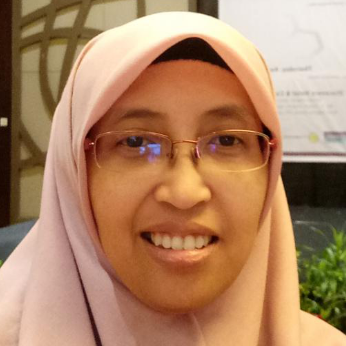International Journal of Intelligent Systems and Applications (IJISA)
IJISA Vol. 11, No. 9, 8 Sep. 2019
Cover page and Table of Contents: PDF (size: 696KB)
Potential Halal Tourism Destinations with Applying K-Means Clustering
Full Text (PDF, 696KB), PP.9-17
Views: 0 Downloads: 0
Author(s)
Index Terms
Halal tourism, K-means, clustering, partitioning approach
Abstract
The clustering application can be used to develop a variety of tourism potential. Currently, halal tourism is a national income that increases every year and is a favorite for Indonesia. The development of halal tourism is supported by a majority population Muslim and as a halal tourist destination in the world. The objective of this study is to investigate the number of clustering with partitioning approach i.e. K-Means (KM) with two simulation scenarios. The characteristics similarity of this method refers to 11 indicators in 2017 Global Muslim Travel Index (GMTI). The output of this study is to display the information in the form of a map and make it easier for the public to determine which halal tourism destinations are high, medium, and low potential.
Cite This Paper
Qurrotul Aini, Eva Khudzaeva, "Potential Halal Tourism Destinations with Applying K-Means Clustering", International Journal of Intelligent Systems and Applications(IJISA), Vol.11, No.9, pp.9-17, 2019. DOI:10.5815/ijisa.2019.09.02
Reference
[1]C. Motik and Indonesian Ocean Council, The Wealth of My Country Maritime Country. Secretariat of Indonesia Ocean Council, Ministry of Marine Affairs and Fisheries Republic of Indonesia, Jakarta, Indonesia, 2010. (in Indonesian)
[2]World Bank. (2017) Population, total: All Countries and Economies. [Online]. Available: https://data.worldbank.org/indicator/SP.POP.TOTL
[3]CrescentRating. (2018) Global Muslim Travel Index (GMTI) 2017. [Online]. Available: https://www.crescentrating.com/reports/gmti2017-gmti40.html
[4]CrescentRating. (2017) Global Muslim Travel Index (GMTI) 2016. [Online]. Available: https://www.crescentrating.com/reports/gmti2016-gmti40.html
[5]Ministry of Tourism Republic of Indonesia. (2018) Program of Developing Halal Tourism. National Dialogue. (in Indonesian)
[6]O. Claveria, “Two-dimensional Mapping of Asia Pacific Destinations Combining Tourism and Economic Indicators,” Asia Pacific Journal of Tourism Research, vol. 22, no. 7, pp. 1-15, 2017.
[7]Ministry of Tourism Republic of Indonesia. (2012) Ministry Promote Indonesia as World Sharia Tourism Destination. [Online]. Available: http://www.kemenpar.go.id: http://www.kemenpar.go.id/asp/detil.asp?c=16&id=2042
[8]F. Wuryasti. (2013) Halal Tourism, a New Concept Tourism Activities in Indonesia. [Online]. Available: https://travel.detik.com/travel-news/d-2399509/wisata-halal-konsep-baru-kegiatan-wisata-di-indonesia
[9]L. Munirah and H. N. Ismail. (2012) Muslim Tourists’ Typology in Malaysia: Perspectives and Challenges. In Proc. Tourism and Hospitality International Conference.
[10]G. Kovjanic, “Islamic Tourism as a Factor of the Middle East,” Turizam, vol. 18, no. 1, pp. 33-43, 2014.
[11]S. Chookaew, O. Chanin, J. Charatarawat, P. Sriprasert, S. Nimpaya, “Increasing Halal Tourism Potential at Andaman Gulf,” Journal of Economics, Business and Management, vol. III, no. 7, pp. 277-279, 2015.
[12]P. Moira, D. Mylonopoulos, A. Kontoudaki, “The Management of Tourist’s Alimentary Needs by the Tourism Industry,” International Journal of Culture and Tourism Research, vol. 5, no. 1, pp. 129-140, 2012.
[13]W. Sahida, S. A. Rahman, K. Awang, and Y. C. Man, “The Implementation of Shariah Compliance Concept Hotel: De Palma,” in Proc. 2nd International Conference on Humanities, Historical and Social Sciences, 2011.
[14]D. R. Ratman. (2016) Development Tourism Destination Priority 2016-2019. [Online]. Available: http://www.kemenpar.go.id/userfiles/Paparan%20-%20Deputi%20BPDIP.pdf (current October 2018) (in Indonesian)
[15]CrescentRating. (2016) The 11 Criteria That Make Up The Global Muslim Travel Index 2016. [Online]. Available:: https://www.crescentrating.com/magazine/travel-index-and-rankings/3857/the-11-criteria-that-make-up-the-global-muslim-travel-index-2016.html (current December 2018)
[16]P. N. Tan, M. Steinbach, and V. Kumar, Introduction to Data Mining. Boston, USA: Pearson Education, 2006.
[17]J. Han, M. Kamber, J. Pei, Data Mining Concept and Techniques, 3rd ed. Amsterdam, Holland: Morgan Kaufmann-Elsevier, 2012.
[18]F. Rangkuti, Inventory Management: Application in Business (Indonesian). Jakarta, Indonesia: Grafindo Persada, 2004.
[19]B. Santosa, Data Mining: Technique of Utilization Data for Business Purposes (Indonesian). Yogyakarta, Indonesia: Graha Ilmu, 2007.
[20]A. K. Jain, “Data Clustering: 50 Years Beyond K-Means,” Pattern Recognition Letters, vol. 31, no. 8, pp. 651-666, 2010.
[21]T. Shi, P. Wang, P. Wang, S. Yue, “Application of Grid-based K-means Clustering Algorithm for Optimal Image Processing,” Computer Science and Information Systems, vol. 9, no. 4, pp. 1679-1696, 2012.
[22]R.-I. Chang, S.-Y. Lin, J.-M. Jo, C.-W. Fann, Y.-C, “A Novel Content Based Image Retrieval System using K-means/KNN with Feature Extraction,” Computer Science and Information Systems, vol. 9, no. 4, pp. 1645-1661, 2012.
[23]M. N. Qureshi and M. V. Ahamad, “An Improved Method for Image Segmentation Using K-Means Clustering with Neutrosophic Logic,”i in Proc. International Conference on Computational Intelligence and Data Science, 2018.
[24]S. K. Jayanthi and C. K. Priya, “Clustering Approach for Classification of Research Articles Based on Keyword Search,” International Journal of Advanced Research in Computer Engineering & Technology, vol. 7,no. 1, pp. 86-90, 2018.
[25]J. Pérez-Ortega, N. N. Almanza-Ortega, and D. Romero, “Balancing effort and benefit of Kmeans clustering algorithms in Big Data realms” PLoS ONE, vol. 13, no. 9, pp. 1-19, 2018.

